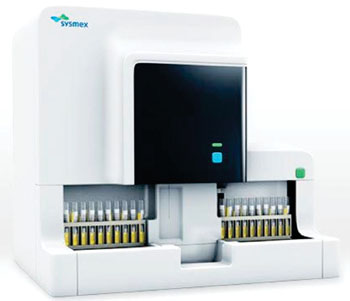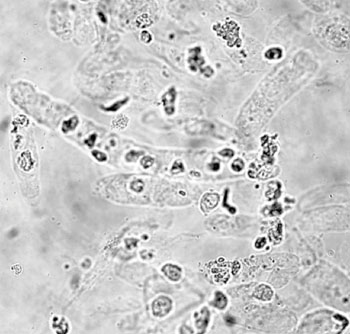Criteria Optimized for Microscopy Following Automated Urine Analysis
By LabMedica International staff writers
Posted on 06 Nov 2014
Urinalysis (UA) is one of the most requested routine tests in clinical laboratories and is very useful in screening, diagnosing, and monitoring many diseases and is not limited in scope to diseases directly involving the urinary tract.Posted on 06 Nov 2014
Fully automated integrated urine analyzers analyze all physical and chemical characteristics of urine and sediments in urine on a single platform; however some formed elements present in urine, casts for example, require manual microscopic examination of the urine sample following the use of the automated urine analyzer.
Clinical pathologists at the Siriraj Hospital (Bangkok, Thailand) randomly selected 399 samples from leftover routine urinalysis specimens in order to establish the threshold of each parameter that achieved the highest efficiency. A validation set of 599 samples was then used to apply the criteria previously established. All samples were evaluated for incongruent results between the results from both components of a fully automated integrated urine analyzer for both chemical analysis (CHM) and, flow cytometry (FCM) and manual microscopic examination.
After concentration, the urine samples were examined under a CX 31 light microscope (Olympus, Tokyo, Japan). The UX-2000 fully automated integrated urine analyzer (Sysmex Corporation; Kobe, Japan) was used. This device can evaluate all physical, chemical, and sedimentary properties of urine. This instrument is made up of two analysis components. The chemical (CHM) analysis component analyzes the physical and chemical characteristics of urine. The flow cytometry (FCM) analysis component analyzes urine sedimentary content.
The investigators set 11 criteria rules for optimization. From 399 samples used in optimizing the criteria, 164 (41.1%) were positive. Among the positive samples, one (0.61%) had five parameter abnormalities, three (1.83%) had four parameter abnormalities, 15 (9.15%) had three parameter abnormalities, 63 (38.41%) had two parameter abnormalities, and 82 (50%) had one parameter abnormality. For microscopic review, they found a total of 270 occurrences from 164 samples: 48 with red blood cells (RBC), 63 with leukocytes (WBC), 10 with epithelial cells (EC), 110 with bacteria, two yeasts, five hyaline casts, 16 pathological casts, 13 with crystals, and three with small round cells (SRC).
The authors concluded that the Sysmex UX-2000 cannot completely replace microscopy, especially for abnormal urinalysis. A viable option is the combination of both the UX-2000 and manual microscopic methods to obtain the best results. This combination can minimize or eliminate error in urine preparation and can also provide flagging for alerting operators when a specimen must be confirmed by manually processing. Therefore, if the UX-2000 is used in the laboratory, it is recommended that the laboratory develop its own criteria for dictating protocols and requirements relating to manual processing. The study was published October 2, 2014, in the journal Clinica Chimica Acta.
Related Links:
Siriraj Hospital
Olympus
Sysmex Corporation












 (3) (1).png)



